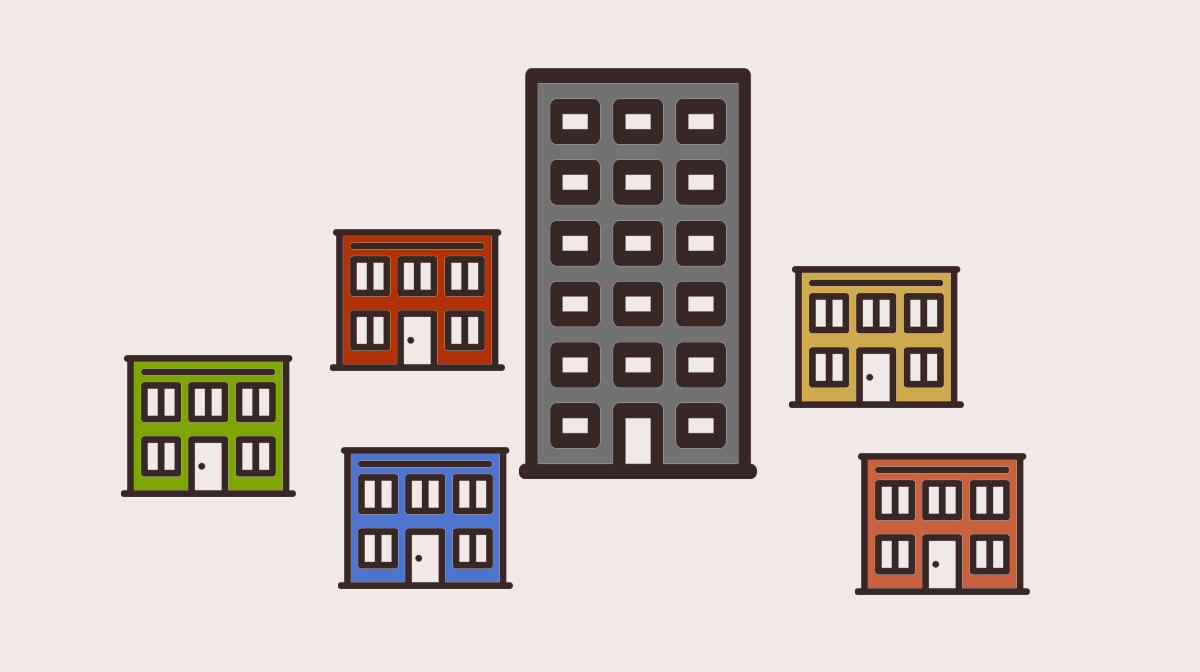When most outsiders think of living in Chicago rentals they think of skyscrapers with sleek elevators and revolving doors, lakefront views and rooftop decks. But all it takes is a glance at the city with Google Maps in satellite view to show you that most of the city is not chock-a-block with 80-story structures. Newcomers to the city may get a little culture shock when they realize that their new rental housing will probably be in a short, squat walk-up constructed over a century ago.
To save those moving to town from a little disappointment, we decided to take a look at what the statistics have to say about the average Chicago rental housing. We paid a visit to our favorite source of statistical data, the American Fact Finder provided by the Census Bureau, which we hope will be one of the few sites to survive the coming change of federal government relatively intact.
The Norm
According to the American Housing Survey last conducted in 2013, the average Chicago renter lives in a building that is 2-3 stories tall (72.5%). It has 2-4 units (29.5%) and was constructed either between 1950-1969 (24.8%) or prior to 1920 (24.3%), with a median construction date of 1961. It's a walk-up building (72.1%) with no elevator (61.0%). Their apartment is at least 2 stories off the ground (50.5%).
According to the American Community Survey last conducted in 2015, their apartment has 4-5 rooms not including the bathrooms (46.5%). It has 2-3 bedrooms (55.3%), complete plumbing facilities (99.4%), complete kitchen facilities (98.8%), and phone service (95.9%). It's heated with natural gas (78.4%) which may be converted to steam through a boiler or used by forced air furnaces. The average rent paid is either $991 or 1109 per month for 2 or 3 bedroom units respectively.
That's all well and good, but some curious renters might want to know what their chances are of finding that swanky high-rise 1 bedroom so we checked the stats on that too.
The Fantasy
A skyscraper would have 50 or more units - that fits with about 16.2% of the rental units in the city. If you want those fancy appliances and a quiet building you'd probably want a rental condominium (12.2%). You'd probably want it to be brand new construction for eco-friendly features - you've got a 0.3% chance of finding something built within the last 7 years and a 2% chance of finding something built within the last 12 years. You've got a 10% chance of finding something in a high rise (which will, by default, have an elevator due to Chicago's housing laws). However, there's a 0.3% chance that those elevators will all be out of service.
The 1-bedroom isn't all that hard to come by compared to some of the other features - 30.2% of the rentals are 1 beds. Studios are actually tougher to find at 9.7%, a number about on par with the 9% of units that have all utilities included in the rent. However if you want those utilities to include solar, wind or water-powered heat, you're going to have some trouble - the number of "no fuel" rentals in the city sits at just 1.9%.
The Unicorns
Those numbers are low, but in some cases they are not the lowest possible. That made us think - what would the rarest sort of rental housing be in Chicago?
The quick answer is very simple - with only about 1700 of them in the greater Chicagoland area (0.1%), mobile homes are the scarcest rental housing. (If readers outside of Chicago have wondered why we don't discuss mobile homes much here, that's why.) To be precise, they are single-wide mobile homes with no larger ones reported at all.
Beyond the mobile homes though, the rarest Chicago rental would be a townhome (5%) in a coop (0.6%) built within the past 5 years (0.3%). It would be 1 story tall (5%) and wheelchair accessible from sidewalk to bedroom (6%). It's heated with oil or kerosene (0.2%) and has at least 8 rooms (2.8%), at least 4 of which are bedrooms (4.8%).
Do you live in the average Chicago apartment? How about one of the rarest ones? Were you surprised at the results? Let us know in the comments!
RentConfident is a Chicago startup that provides renters with the in-depth information they need to choose safe apartments. Help us reach more renters! Like, Share and Retweet us!


